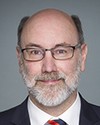Yes, I can speak to that.
As you've noted, we have a fairly significant project with the Government of Alberta to enhance monitoring in the oil sands area, which includes monitoring of water, air, land, and biodiversity. That's been agreed to relatively recently, and we are now starting to put in place a credible scientific plan.
We were always monitoring. Now we're increasing that in recognition of the fact that there is interest in the impacts of oil sands activity on the surrounding environment. We take that very seriously. We work very closely with Alberta, as the minister said. It's often important for us to work hand in hand with the provincial government.
The idea is a good thing for governments, industry, and citizens for a few reasons.
One, we'll have a better sense of what the impacts are. If there are impacts in the water, aquatic species, on the land, in the air, we'll know better because of this enhanced activity.
Two, it's also good for the industry itself because it shows we are paying attention. To the extent people outside Canada, or even within Canada, have concerns about the oil sands, we are making efforts to understand those impacts. If we see the impacts, we'll know better what to do.
Three, it's in our “open science” commitment. All of the information and the monitoring we do is available on the portal that we have established, and that is accessible to everyone. Again, it's putting that information out there that people, researchers, can use and can do their own subresearch projects on.




